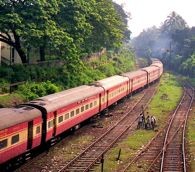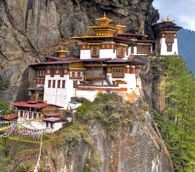Destination: Asia
How Korean Karaoke Changed My Life
by Lavinia Spalding | 08.09.16 | 1:05 PM ET
After being turned away from the school choir, Lavinia Spalding lost her love of public singing. Then she moved to South Korea.
Call Your Mother. Seriously.
by Abbie Kozolchyk | 12.30.14 | 3:03 PM ET
Abbie Kozolchyk visits a most unusual theme park in Singapore
Ramen: a ‘Steaming Bowl of Paradox’
by Pam Mandel | 08.26.14 | 9:36 AM ET
A flat of Top Ramen was essential gear during my “living out of a car for months on end” days. Prior to that, ramen was my college survival food of choice. It was cheap, easily supplemented with veggies, and required no complicated kitchen equipment. Ramen was what car campers and poor students ate, in quantity. Affordable, fast, uncomplicated. And, it turns out, culturally significant.
From Pacific Standard:
George Solt’s The Untold History of Ramen is an attempt to show how the dish—hot broth, wheat noodles, and (usually) pork—has become part of Japan’s identity and an international success. Ramen is a steaming bowl of paradox: a Chinese import now considered quintessentially Japanese both at home and abroad, and a workingman’s comfort food that has been refined into haute cuisine among the young and hip. Ramen shops have become a signature of the Japanese urban landscape. The country has over 35,000 of them, including at least four within a five-minute walk of my suburban Tokyo apartment.
Ramen is all the rage in the U.S., too. Ramen cookbooks are finding their way onto bookstore shelves and high-end ramen places are fast becoming as popular as the cheap Japanese noodle joints that crowd university neighborhoods. Eater, The New York Times, The Huffington Post and Buzzfeed have all run features on ramen’s hotness with the hip.
Of course, many people got their introduction to ramen from Cup Noodles. The humble Styrofoam cup now has its own museum in Yokohama, Japan, where you can trace its history and make your own takeaway serving of instant chicken ramen. From budget eats to museum souvenir—a fine illustration of ramen’s rags to riches glory.
And in case you’re wondering… warehouse pricing for a flat of Cup Noodles? About eight bucks.
Clear-Eyed in Calcutta
by Andrew McCarthy | 12.19.13 | 3:02 PM ET
Andrew McCarthy closed his eyes the moment before the blade hit the goat's neck. Afterward, he knew just what he had to do.
In the Abode of the Gods
by Jeffrey Tayler | 07.10.13 | 11:22 AM ET
Jeffrey Tayler treks a Buddhist pilgrimage route through China's remotest, high-altitude domains
36 Hours in Taipei: Realist’s Edition
by Eva Holland | 04.16.13 | 11:57 AM ET
Vanity Fair’s Juli Weiner has a bone to pick with the NYT’s latest “36 Hours in…” travel feature. “We are very aware of the fact that The New York Times is an internationally read newspaper,” she writes, “and that many subscribers probably do live a short drive from Taipei, but does The New York Times recognize that ... many subscribers would have to travel for 36 hours just to reach Taipei?”
Weiner offers up a revised version of the itinerary. It’s funny and, at times, too familiar:
Friday
Five a.m.After a total of eight hours of flight delays, arrive at Taiwan Taoyuan International Airport and ask your significant other whether he remembered to exchange currency before you left. He did not. As it is five a.m., there are no banks open. There is a currency converter at the airport. Wait 25 minutes behind a very large family who seem to be exchanging their country’s entire G.D.P.
Six a.m.
After collecting your luggage, argue bitterly with your significant other about whether to “just take a cab to the hotel” or “get acclimated with the mass-transit system.” Roll your eyes and snap that you will “have lots of time to wander aimlessly around the subway but after sitting on a plane for 20 f*cking hours is not the time to start, O.K.?” Your significant other will stomp off and get a cab. The ride will be circuitous, bumpy, and extremely expensive and you will feel miserable and responsible for everyone’s unhappiness.
(Via @skiftnews)
Travel Dispatches From a Hidden Mumbai
by Eva Holland | 01.23.13 | 8:44 AM ET
I’ve been working my way through Behind the Beautiful Forevers, Katherine Boo’s much-lauded book about life in a precarious Mumbai slum. It’s an incredible work of reporting, and beautifully written too: The book tells the story of a group of families in Annawadi, a semi-legal settlement whose economy revolves around recyclable garbage.
It’s not what most people would call travel writing—Boo is absent from the story, which reads like a novel with an omniscient narrator—but as I read it, I’ve been thinking about how it might fit into the genre. It’s drawing me into a part of the world I’ve never visited, and likely never will; it’s teaching me about lives led on the other side of the world, lives that are both wildly divergent, and yet not so different, from my own. Isn’t that one of the tasks of great travel writing?
Interestingly enough, Annawadi is located right next to the Mumbai airport, which means its dramas have unfolded under the noses of every tourist and travel writer who’s ever visited the city.
NPR has a short excerpt.
Crawling Toward Bangalore
by Clay Shivers | 01.22.13 | 11:10 AM ET
Clay Shivers boarded the Indian train determined to live out his travel fantasies
Video: Lisa Napoli in Conversation with Eric Weiner
by Jim Benning | 05.18.12 | 2:01 PM ET
World Hum contributors Lisa Napoli and Eric Weiner spoke in front of a live audience recently in Santa Monica. Napoli, of course, is the author of “Radio Shangri-La,” about her experience in Bhutan. Weiner wrote “The Geography of Bliss” and “Man Seeks God.” Their wide-ranging discussion touched on Bhutan, happiness, authenticity and spirituality, among other things. This 30-minute video has some highlights.
Bali Belly and the Zombie Apocalypse
by Linda Watanabe McFerrin | 05.17.12 | 1:17 PM ET
When Linda Watanabe McFerrin fell ill, all the travel meds in the world couldn't keep the undead away
Everest Base Camp: Now With 3G
by Eva Holland | 04.28.12 | 11:40 PM ET
Outside’s Grayson Schaffer is spending two months blogging from base camp—and, as he notes in one of his early posts, he’s doing so without the use of a spendy satellite connection:
Until the 1970s and ‘80s, most Everest expeditions included two porters who did nothing but run mail dispatches from Base Camp to the nearest village. No longer. This year, multiple climbers at Base Camp are snapping photos on their iPhones and sharing them through Instagram and Facebook in real time.
That’s possible because of Nepal’s dominant cell phone service, Ncell. In 2010, the provider announced plans to bring 3G coverage all the way to Mount Everest. Now it’s here.
Just one more sign of our inexorably shrinking planet.
Into Sacred Air
by Lisa Napoli | 04.10.12 | 11:17 AM ET
In an excerpt from "Radio Shangri-La," Lisa Napoli makes the climb to Bhutan's Taktsang Monastery
Interview with Lisa Napoli: ‘Radio Shangri-La’ in Bhutan
by Jim Benning | 04.10.12 | 11:16 AM ET
Jim Benning asks the author about her memoir and how the Himalayan kingdom changed her
Will Aun San Suu Kyi’s Election Victory Spur Travel to Myanmar?
by Jim Benning | 04.02.12 | 5:19 PM ET
Indeed, the Nobel Peace Prize winner’s election to a parliamentary seat “may further fuel demand,” reports Jayne Clark at USA Today.
But then, travel to the country formerly known as Burma was already on the rise, thanks in part to a growing sense of optimism that positive changes are afoot in the country.
Tourist arrivals rose by 20% in 2011, according to the Myanmar Times, though the 816,000 tally is dwarfed by the 19 million tourists who visited neighboring Thailand.
A number of U.S.-based tour operators are for the first time offering tours to the once-reclusive nation. Demand for Overseas Adventure Travel’s Burma tours is so great, the Boston-based company has increased its 2012 departures from 40 to 61 and is hoping to schedule more.
At any rate, it’s good to see.
The Particular Anger of Powerlessness
by Lauren Quinn | 03.05.12 | 11:50 AM ET
Lauren Quinn confronts a culture of bribery while crossing the Cambodia-Laos border
- « Prev Page
- Next Page »









